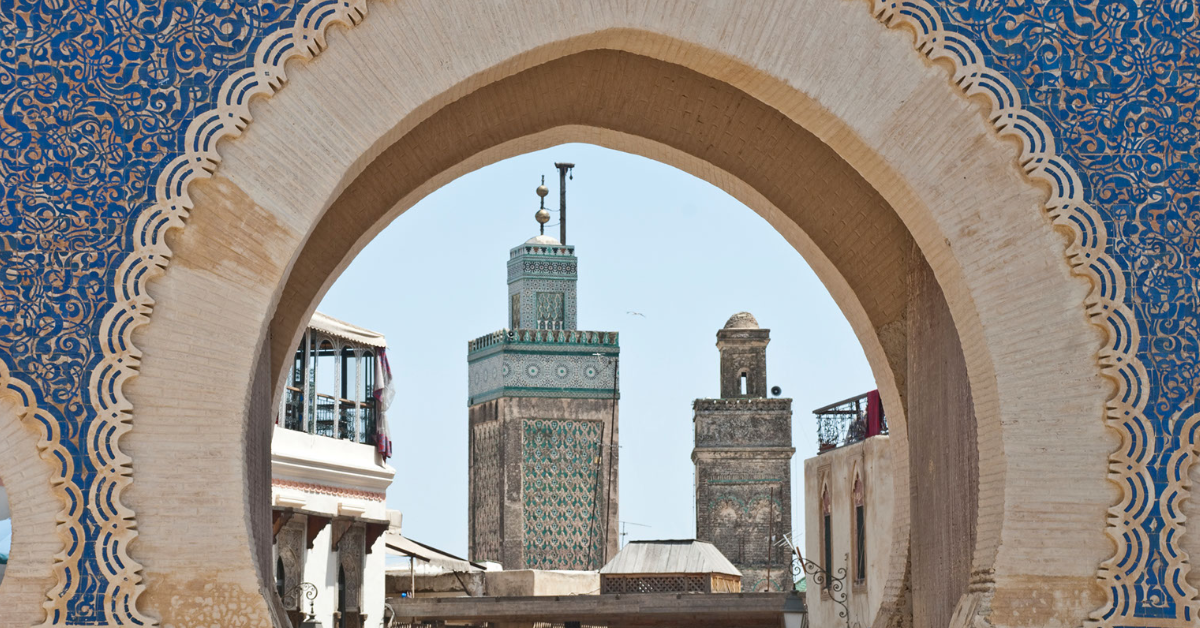A Culinary Journey: Moroccan Delicacies You’ll Fall in Love With
Essential Moroccan Delicacies You Can’t-miss
Welcome to this new blog post of AFC Morocco Tours where we will talk in depth about Moroccan delicacies. The north-African country of Morocco, a sovereign state, is at the crossroads between Africa, Europe, and the Middle East. The influence of this is seen in its culture and lifestyle. Moroccan cuisine has greatly benefited due to this fusion of styles. Spices form a huge part of Moroccan recipes. The most consumed meat is chicken and beef. The consumption of pork is prohibited due to religious laws. Moroccan natives are very serious about their tea. It is served throughout the day and is considered impolite if refused.
People tend to group all Moroccan food under the category of couscous. But this does the diverse cuisine a disfavor. Moroccan cuisine is an experience one needs to undertake to truly appreciate it. Moroccan dishes amalgamate Jewish, Arab, Berber, and French cuisines.
Let’s look at 15 Moroccan Delicacies You’ll Fall in Love With:
1. Tagine
Tagine is a cooking vessel with a dish named on it. It is a cooking pot made out of clay. Its lid is conical in shape which is what makes it unique. Chicken, beef, lamb, and vegetables are slow-cooked in it. Tagine is one of the dishes that can be found all over Morocco. It is available everywhere, from roadside stops to restaurants. Once you have tasted Tagine, you come to associate the flavors of Morocco with it. Tagine’s cooking style is one of the facts about Moroccan food to be discovered. They can act as a starter or a main course. In some cases, dessert can be prepared tagine style too!
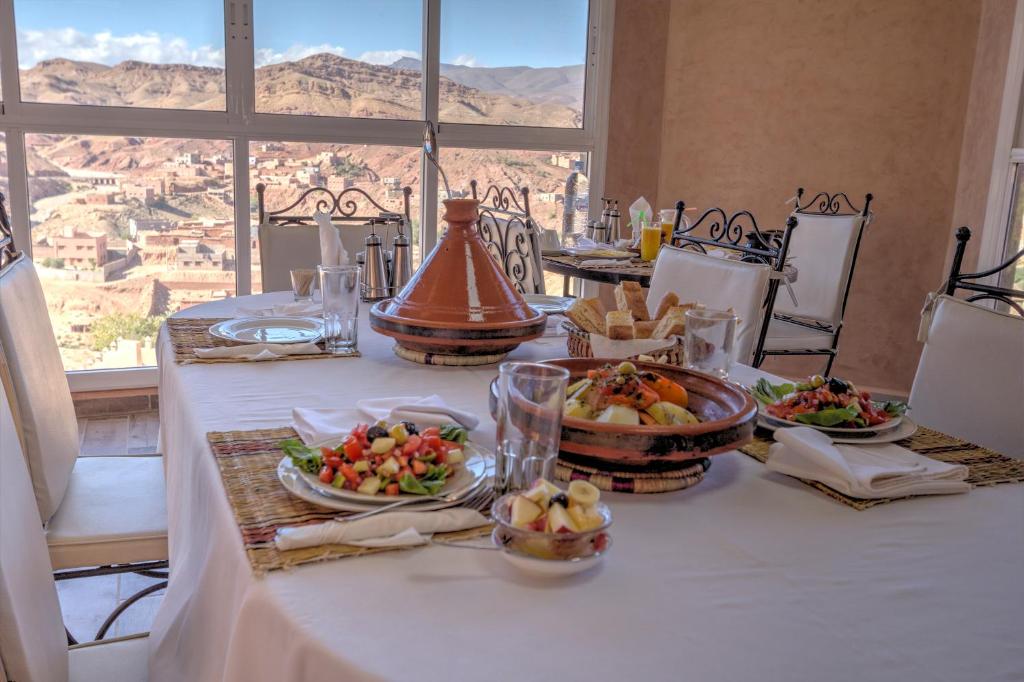
2. Couscous
Morocco is famous for its couscous. It is a Moroccan specialty item, that is Berber in origin, usually reserved for special occasions and festivals. It can however be found at most eateries around Morocco. Due to its growing popularity, couscous is increasingly found in restaurants worldwide. Couscous is typically served with a stew; either meat or veggie. It is a healthy alternative to other carb-rich foods. The most famous kind of Couscous is the 7-vegetable couscous. It is not difficult to prepare and is even easier to have multiple sharings!
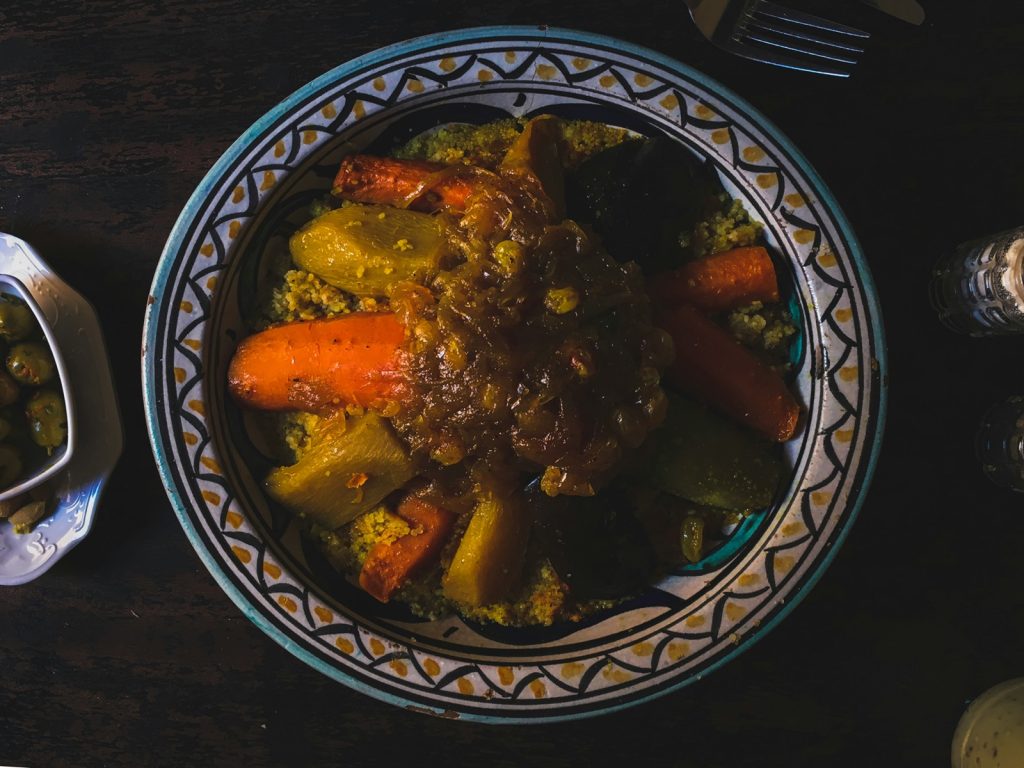
Moroccan Couscous
3. Bastilla
Bastilla or Pastilla is a famous Moroccan Chicken or Pigeon pie. It can be found on any Moroccan menu. It is one of those Moroccan dishes that you will love or hate. It was originally made only with pigeons, but now is increasingly being made with chicken to cater to everyone’s palates. It is a fusion of sweet and salty flavors. It could be served as a main course item or a dessert. Pastilla is said to be “uniquely Moroccan, intricate and grand, fabulously rich and fantastical”.
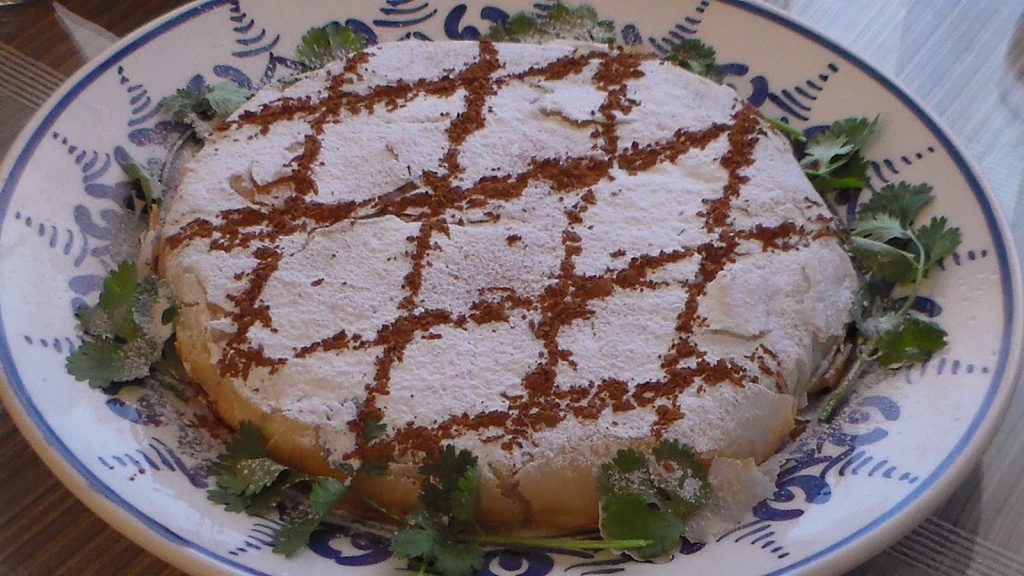
Moroccan Food Tour
4. Maakouda
Maakouda is one of the less famous but deeply satisfying street foods of Morocco. It is a deep-fried piece of heaven. It is a potato beignet but of a savory variety. Maakouda can be described as biting into a crunchy cloud. It is widely available on the streets of Meknes, North Africa. It is inexpensive and tasty, making it a stellar attraction. A Maakouda is usually served as a sandwich but sometimes also a great Moroccan salad.
5. Briouat
A Briouat is a Moroccan variety of the Indian Samosa. It is a puff pastry stuffed with fillings that can either be sweet or savory. It mostly tends to be savory. It is stuffed with either chicken or lamb along with lemon, cheese, and pepper. It tends to be as tasty as it sounds. It is usually made during the month of Ramadan as one of the dishes that families open their fast with. Sweet Briouats can be filled with either almond or peanut pastes. The sauces that go along with the Briouats are what make them even more appealing.
6. Baklava
Baklava is a Turkish dessert that is famous all over the world. Restaurants everywhere try to replicate the delicacy. But it is not an easy dish to recreate. There is a lot of expertise and hard work needed to make a good Baklava. Historian Paul D. Buell argues that the word “baklava” may come from the Mongolian root baγla- ‘to tie, wrap up, pile up’. This explains to a certain extent how the dessert is prepared. Butter and oil separate layers of filo dough that are heaped in a large pan. Most recipes have layers of nuts and filo as their ingredients. After baking the Baklava is doused in a sweet syrup of honey, rose or orange and allowed to rest. Morocco has managed to master the art of creating delicious Baklava. It is so widely popular in Morocco that many might mistake it to be a part of the native Moroccan cuisine!

7. Baba Ganoush
Is there anyone who hasn’t heard about the famous Baba Ganoush? It is a famous part of the Lebanese cuisine. It is a dip quite similar to hummus but the difference is that its base is eggplant. The preparation includes baking an eggplant over an open flame and then peeling it. Once the eggplant has that lovely smoky flavour it is mashed and mixed with olive oil and pomegranate seeds. Vegetables like onions and tomatoes may be added. This is the traditional preparation. Today a variety of preparations are available with all kinds of additions to the original delicacy. It is a typical Moroccan starter, even though it is borrowed from a different culture. It is eaten with either bread or as a part of a different dish. Baba Ganoush is one of the best examples of how different cultures have affected Moroccan cuisine. It borrows the best of all cultures but manages to make it their own.
8. Khobz
Khobz is only one of several kinds of bread baked in Morocco. Other famous breads are Harcha, Rghaif, and Baghira. Khobz is baked in wood-fired ovens. It is a crusty bread served with many
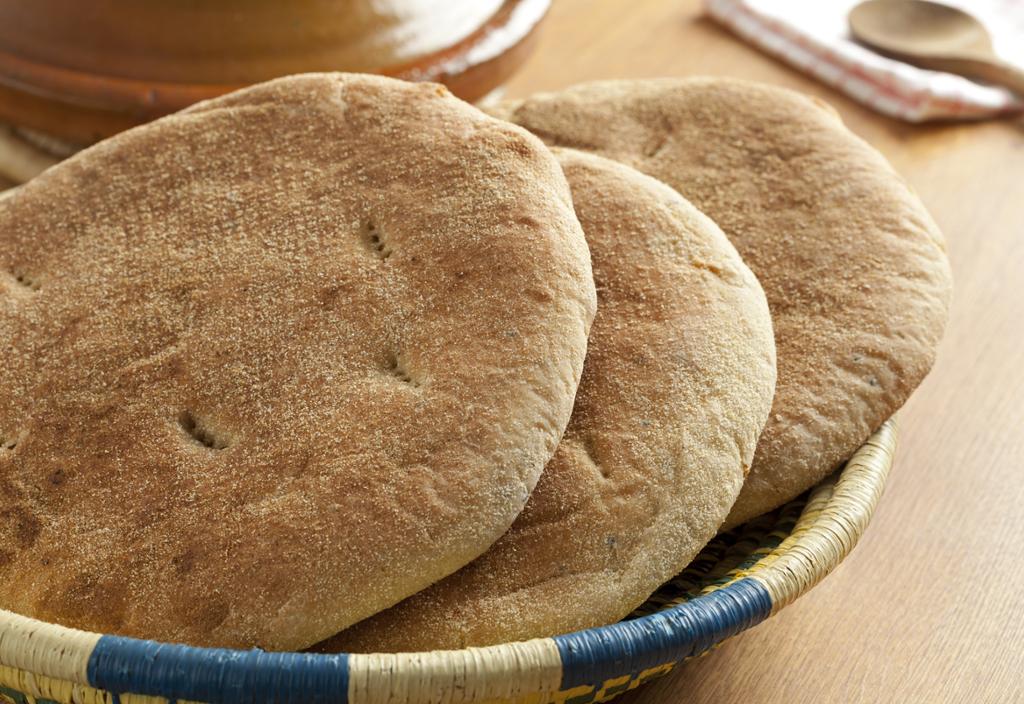
9. Bissara
A Moroccan soup to win hearts, Bissara is a common breakfast item. It is made of dried fava beans and topped with olive oil and cumin. It is a rich and fulfilling way to start the day.
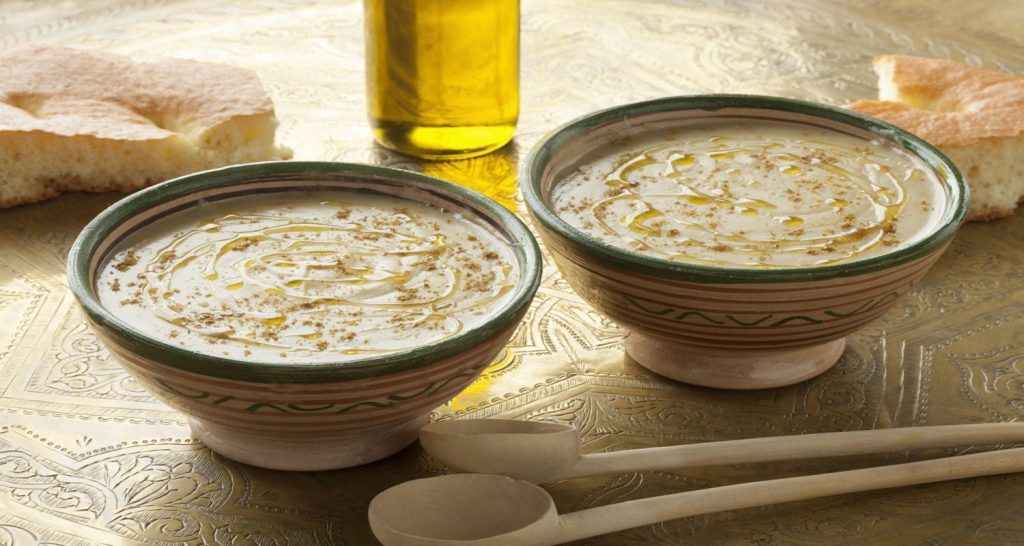
10. Brochettes
Brochettes are kebabs rubbed thoroughly with salt and spices. Depending on your taste, they can be chicken, beef, or lamb. Given their smoky theatrics, brochettes make for great and inviting street food.
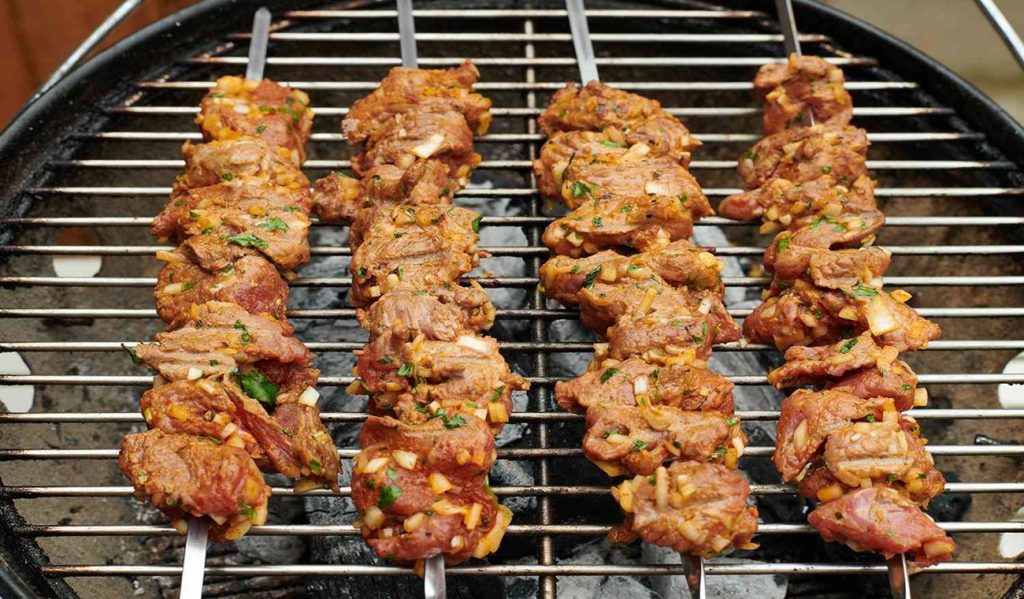
11. Moroccan Eggplant Fritters
This is a favorite Moroccan side dish. Although eggplant is used in many Moroccan dishes, this one is different because it is deep-fried in a paprika batter. It is one of the must-try items of Morocco.
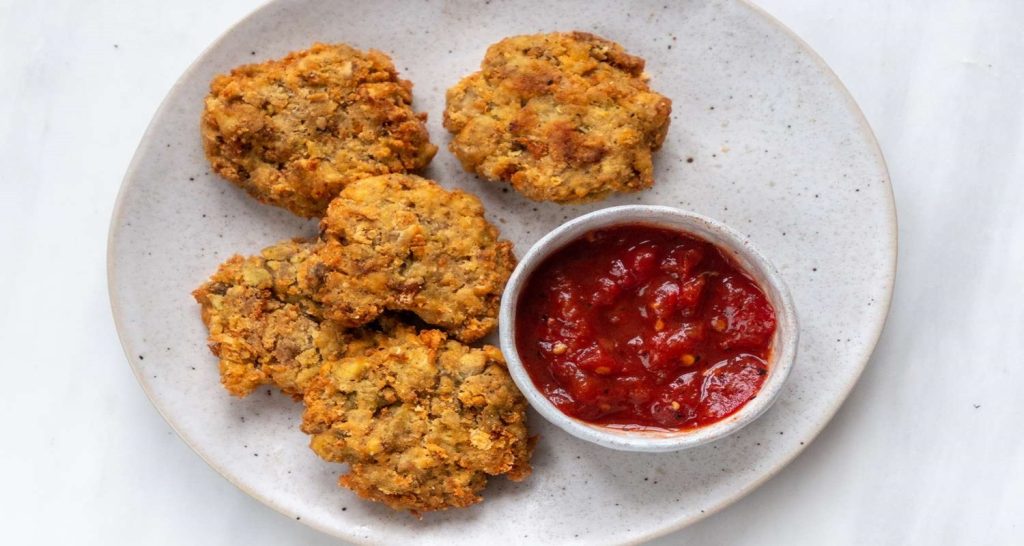
Moroccan Eggplant- Morocco Food Tour with AFC Morocco Tours
12. Snail Soup
Nothing quite screams Marrakech food like Snail Soup does. They are cooked in a watery broth and seasoned with a plethora of spices. Do not forget to drink the broth once you’re done slurping the snails from their shell! This is so native to Moroccan culture that you won’t find a soup like this anywhere else!
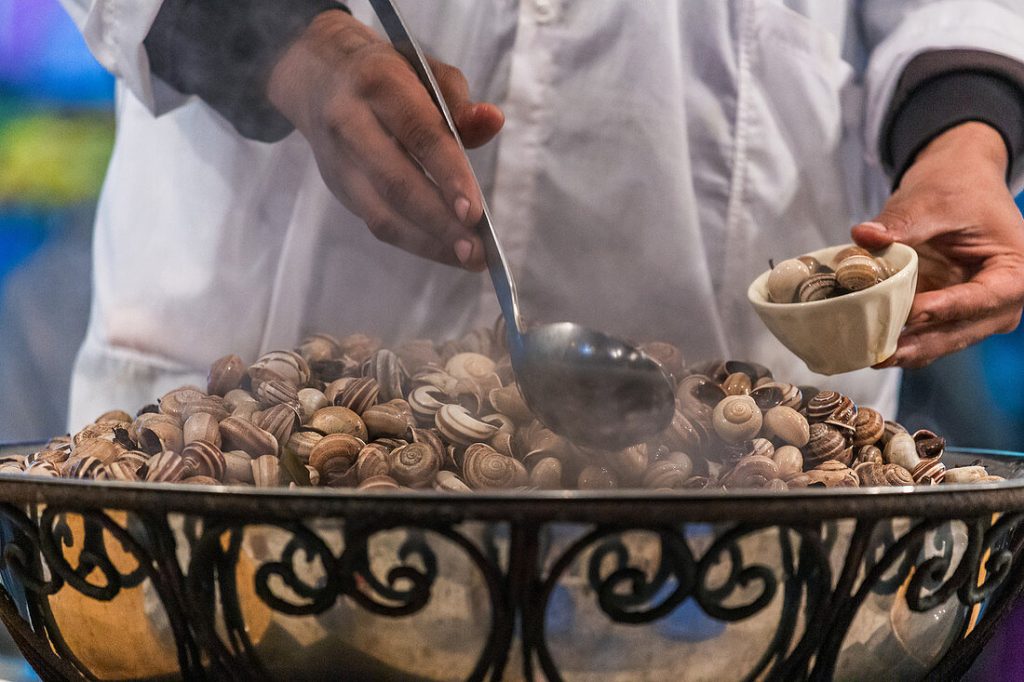
Moroccan Snail Soup – Morocco Food Tour with AFC Morocco Tours
13. Moroccan salad
For a land so renowned for its meat dishes, Morocco does not leave its vegetables behind. Moroccan vegetables are rich in fiber and very nutritious. There are all kinds of salads that are consumed by the Marrakech people. They make vibrant salads that are pleasing to the eyes as well as to the palate. This is paired with yummy dips!

Moroccan Salad – Morocco Food Tour with AFC Morocco Tours
14. Kefta
Moroccan Kefta is a tradition passed down from generation to generation. It is a Moroccan lamb preparation that has gained popularity all over the world. Stalls usually sell these with the famous Moroccan mint tea. It has a rich herby flavor and a smokiness that would make you want to go back for more.

Moroccan Kefta- Morocco Food Tour with AFC Morocco Tours
To conclude I’d want to impress upon readers once again the richness of the Moroccan Menu. These recipes are just a teaser into what the food in Morocco could taste like. No matter how much we try to replicate it in our homes or even restaurants, the authentic taste of Moroccan spices can never be recreated. It is the Moroccan spice mix that makes their food so lusted after and why more and more Marrakech restaurants are popping up all over the world. But the truth remains, there is no place to experience Moroccan Cuisine like Morocco.













